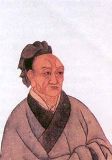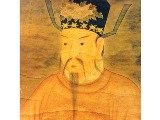| Who are contributors to the development of Chinese Prose? |

| Sima Qian and Records of the History Records of the History plays an important role in linking the past and the future in the Chinese history, also in the development of Chinese prose. It has 103 articles with more than 50,000 Chinese characters. He intended to find out the patterns and principles of the development of human history by writing Records of the History as well as to find out the relationship between heavenly law and men. |

| Ban Guand Chronicles of the Han Dynasty Chronicles of the Han Dynasty has 100 articles recounting a history of 229 years. Its language is formal and groomed, adopting lavish parallelism and ancient words. He took over the task of writing a history of the Former Han dynasty from his father Ban Biao. After his death, his sister completed this book. |
| Han Yu’s (768-824) Prose
Han Yu whose prose is rich in content and varied in form became known as the "Prince of Letters". His novel and language made a fine model for revival of classical prose. His style is powerful, unrestrained and flexible. He created many new words and sayings, which became widely circulated and are still used by people today. His own works were written in a simple prose style unlike the elaborate manner popular at the time, and he became known as |
| Liu Zongyuan’s (773-819) Prose
Liu Zongyuan’s prose was natural and fluent. As a prolific writer, he created many biographies, fables and travel notes. Among his works, travelogues have been the most popular ones. It was from Liu Zongyuan’s writings that travelogues were developed into an independent literary genre. Using a lot of short sentences makes his writing read rhymed and full of variation. He was a founder of the Classical Prose Movement, and came to be traditionally classed as one of the Eight Great Prose Masters of the Tang and Song Dynasties. |
 | Ouyang Xiu’s (1007-1072) Prose
Ouyang Xiu’s works contain both narrative and lyrical qualities that best illustrate his achievements in prose creation. Most of his works described the daily scenery of the four seasons.
Late in life Ouyang Xiu gave himself the title "The Old Drunkard." He was an individualist, both in his approach to writing and in his interpretations of the classics. |